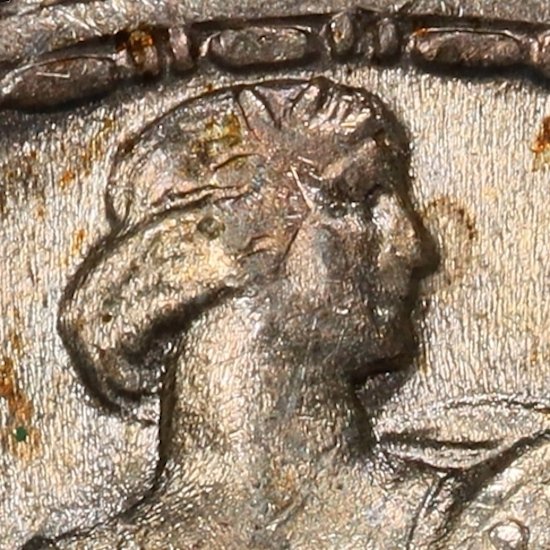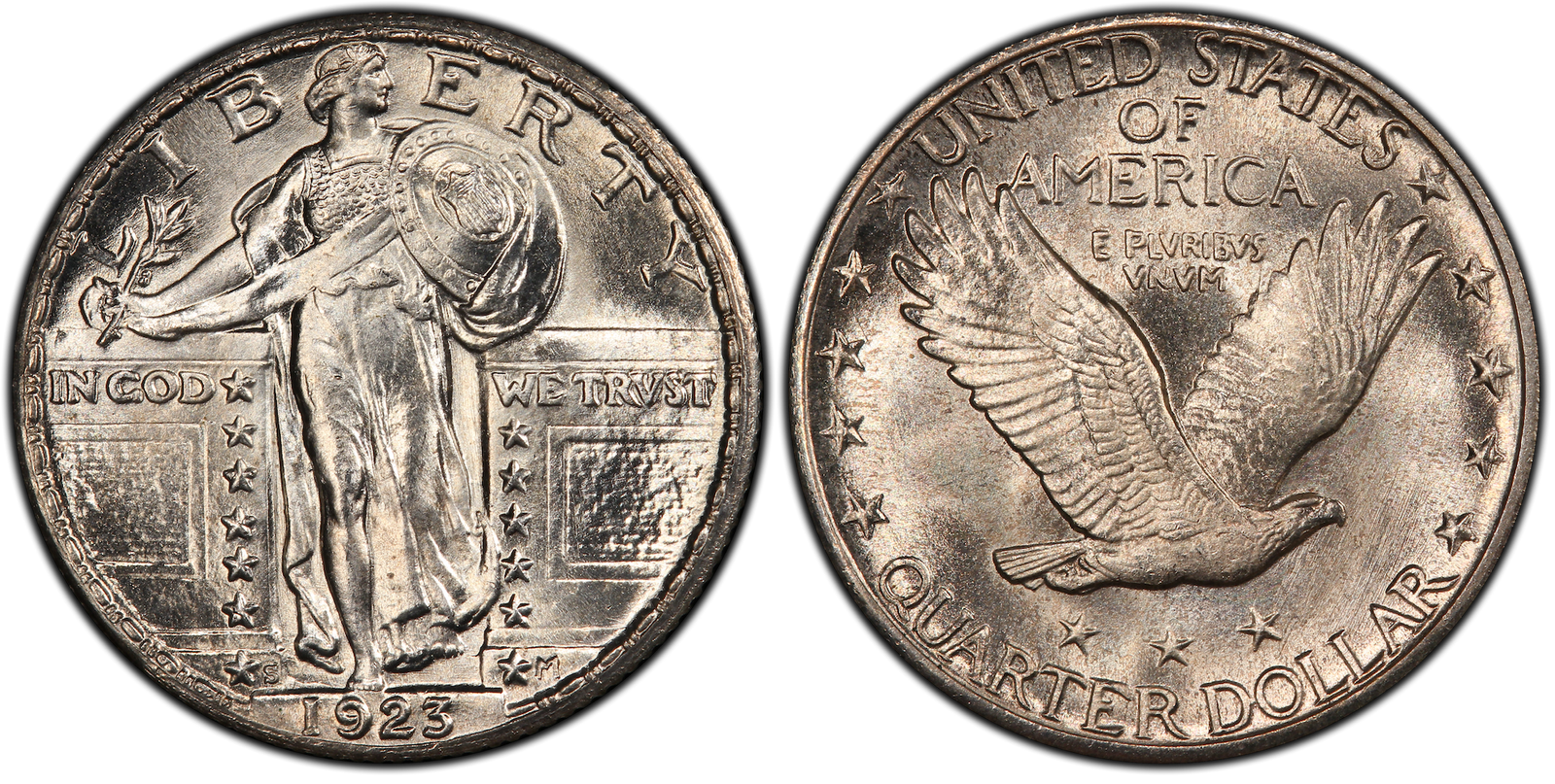
The middle denomination of the three "classical" coins that debuted in 1916 has been a collector favorite for generations. The Standing Liberty quarter may have had a design that did not stand up well to circulation in commerce, but when freshly minted, it had few equals in terms of the awe it inspired among coin enthusiasts. All good things must pass. After various design modifications and a host of problems faced by mint officials in producing fully-struck coins, the Standing Liberty quarter series was concluded, well before the Mercury dime or Walking Liberty half. The Washington quarter, first minted in 1932 in honor of George Washington's birth in 1732, would succeed it.
Standing Liberty quarters retained identical specifications as their predecessors. Consisting of ninety percent silver and ten percent copper, they continued the status quo of a ninety/ten ratio for circulating silver coinage. At 6.25 grams, this composition resulted in a precious metal content of .18084 troy ounces. The quarters were also 24.3mm in diameter, slightly under an inch.
1916 produced many numismatic rarities, and the Standing Liberty quarter series was no exception. The extremely low-mintage 1916 Standing Liberty quarter is undoubtedly the key to the series but is so difficult to obtain that collectors are often satisfied without including it. The secondary key to the set is the 1923-S. Not far behind in terms of desirability are the 1921-P, 1919-D, 1919-S, and to a slightly lesser degree, the 1920-D and 1924-D. This series is challenging for collectors because so many dates are scarce. Despite being a "recessed date," one with protected date details and a higher survival rate, the 1927-S is also a semi-key because its initial mintage was so low. Nearly every date in the series includes a low number of extant examples in high grades, and the prices tend to reflect this difficulty in locating acceptable specimens. The most popular variety, the 1918/7-S, is even rarer than the 1916. To complicate matters, while some collectors might be willing to retain a 1916 sans date in "about good" condition, there is little fun in purchasing an overdate variety that one cannot see ; a buyer is almost compelled to seek out examples in at least "very good" condition.
Except for a few well-circulated common dates from the type 3 cohort (1925-1930), every coin in the series carries a respectable value. Collecting Standing Liberty quarters takes effort and patience, but the rewards of completing the collection (perhaps minus the 1916) will be worth it. The series comes with peril. These coins suffered from weak strikes in several design elements. Liberty's head was plagued by poor striking, and this was the basis for "Full Head" quarters that pass muster. Furthermore, the shield center and its outlying rivets often appeared equivalent to a circulated grade the day the coin left the mint. The eagle's beast feathers, as well as Liberty's knee, were also frequently soft. The issue with the date wearing off prematurely on coins minted before 1925 was cruelly exacerbated by the condition that some coin dates had been minted with missing details. A collector navigating problems with coin strikes will be relieved to learn that authenticity is a lesser problem in this series. Though one should always closely examine one's coins and seek professional authentication for high-grade key dates, this series has not been inundated with fake coins to the extent of other series.
